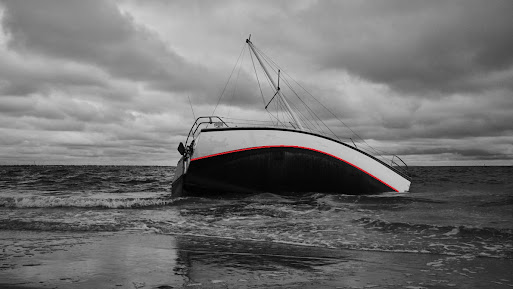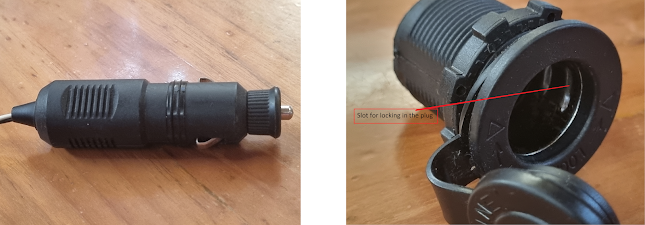"Things We Learnt" and I hope to add to them as we go along, they are in no particular order.
Things break.
Is it wise to have things that serve a dual purpose, if it breaks then you loose two or more systems
Spare parts, stock up wisely the best thing to do prior to a voyage is to ask around, see if you can get an idea on what your type of vessel has had fail. Every one will have a tale to tell and what was important to them.
Invert cans of antifoul, his sounds like a good idea however all the heavy metal still falls to the bottom of the can once stood the right way up. I think the real message should be, stir cans of antifoul vigorously before use, and then again and again before decanting into roller trays or spray equipment.
Clear flush the water tank fill hose prior to topping up the tanks. Pre taste and inspect water before filling tanks, use a charcoal pre filter
Check the operation of a gas detector by holding an unlit lighter under the sensor and pressing the lighter’s valve.
Citrus hand cleaner with pumice grit, (fast orange etc) to clean power cords tenders and fenders
While electronic navigation plays a central role on most boats today, paper charts should have their place at the sensible sailor’s navigation station. No Chart Plotter can match the “ overall picture” offered by paper charts, or the backup benefit in an electronics failure no matter how it was caused.
Chart Plotters, dont become a satellite aided grounding statistic. If you only have one chartplotter, keep it zoomed in. You really want to see the detail, there has been the loss of several vessels due to the chart plotter being zoomed out to see the destination miles away. Zooming out to this scale removes important details like reefs and rocks.
Saving night vision: We have red floor lights in the cabin and throughout the vessel; these do help to keep night vision when we need to go below or before coming on shift. Once we have worked out our passage plan and entered all the problems and marked all the clearing bearings on the paper charts and into the chart plotter we make sure we don’t mark any areas of interest with pink or red lines, we want to make sure they are visible under red light. Another trick I have learnt is instead of only using the night dimming function of the chart plotter I have a square of red acrylic that I can Velcro to the face of the chart plotter. We have found that we can still see the detail of the chart and save our night vision at the same time. If your instruments are too bright, squares of red acrylic can be cut to fit the face of your instrumentation.
The previous owner decided to take the brand plaque from the steering compass flip it over and have it engraved with the vessels name. While this looked pretty he screwed it back on to the compass housing using plated steel screws. It wasn’t long after taking possession of the vessel, I was getting concerned with the steering compass performance and was about to head out to do some checks. Then as I was getting a closer look at the compass and had removed the outer cover I noticed rust bubbles on the chrome screws. The compass took off and changed about ten degrees when I removed the screws and it hasn’t worked better. So it is well worth your while when doing work around the compass to check the compass reading prior to starting work then again after, while this isn’t a definitive test at least you will have some idea that what you have done has either changed the magnetic field of your vessel or not and it will need to be sorted out before heading too far afield. It is always a good idea to swing the compass after any work, or after being tied up at the dock for some time.
Wind generators and exploding blades, it does happen. Our last set of blades lasted 9 years of use through all sorts of weather without mishap. With a little human intervention you can minimize the risk of the blades letting go. To keep the wind generator from going into free wheel and over revving keep a load on the generator. If you are in strong winds and the batteries are getting close to fully charged it’s time to put the brakes on for a while. I did some investigation and found when the battery levels are low and can take all the wind generator can output, the generator doesn’t easily get to the high speed spin. I found that when the generator is loaded it will walk on the blades, similar to prop walk and will slow before starting again, the process continues time and time again until the batteries start to become fully charged. The load reduces when the batteries are reaching the fully charged state and the prop walk doesn’t happen as much, and without load before you know it the generator is going into over speed even though it’s not supposed to due to inbuilt electronic braking. Other things you can do to reduce the risk? If a storm or high winds are headed your way turn the brakes on or tie the generator off so it won’t run. Don’t run you wind generator when tied up at the dock and you are charging the batteries with shore power at the same time, Its bloody annoying for your neighbors and even the quite generators can get on your nerves after a while, secondly your batteries will be topped up and not load the generator.
Pickling the water maker, if you need to have your water maker pickled when you are not going to be using it for a while make sure you use the chemicals supplied by the manufacturer. We had an expensive rebuild on our pump when we sent it for a service, it looks like our water maker had previously been pickled with the wrong solution not the manufactures recommended product. The problem here is that the use of incorrect chemicals can damage the plastics commonly used in systems. So in our case instead of a rebuild we required a complete new pump at 3 times the price. By paying slightly more for the pickling solution from the manufacture can mean a better total cost of ownership. The next best bit of advice I can say about a water maker is to flush it with fresh water when you have finished, they are like any other piece of equipment, wash the salt off or out from inside will prolong their life. And what ever you do if you have a Spectra system never use sodium metabisulphite to pickle it, there those who have no idea and will recommend it because that's what they use in their brand of watermaker. Do not follow their advice or you will ruin the plastics in the system.
We have experienced times when ships ( large <900’ ships) are anything up to a mile ahead of the plotted AIS position, the position isn’t static but moving at the same speed as the vessel being recorded by radar. Beware of relying on AIS positions as being 100% accurate, while I am sure we have seen them advertised as radar, these units are not radar. When working well and all the local traffic is transmitting trouble free they do seem able to place vessels on the display very close to their actual position. Unfortunately there is room for error due to a multitude of reasons, everything from propagation delays, outside interference, transmitter equipment faults, receiver errors, and the list goes on and I won’t go into these here as it’s not in the scope of the article. Only ships of 300 gross tonnage and upwards are required to have it and often it is the fishing boats and smaller vessels that are a bigger risk near the coast due to the sheer number of them. So radar is still the best at seeing what is around you. If you want radar buy radar, if you want a tool for gaining information of ships in and around your area of operation then get AIS as well. We use it a lot as another tool to make it safer out on the water, gives us a ship name to call by radio. But just don’t rely upon it for safely finding all targets and placing them on the plotter where they really are.
Wire crimps need to be put on correctly to be of any use
Same goes for swaged rigging fittings, they need to be put on correctly so they dont break loose.
Something we learnt early on is to read sealant tube instructions and especially check the list of non acid sealant contents or look at the cleanup on the back. Acid based silicone can be a problem if used on metal.
We have found the product CLR has a multitude of uses on board. I use it to remove rust stains from gel coat and painted surfaces. Removing calcium from around fresh water fittings.
If you like to spray a boat wash which has phosphoric acid as an ingredient be aware that some sealants for bedding deck fittings can become either soft or actually start to crumble if left exposed to the acid for some time.
To help keep crew on and have a good handle when moving along the deck we have replaced the top wire of the lifelines with stainless steel tube, this makes for a better hand hold and is better to fall against in a sea way. It’s not for everyone but it is an option that has worked well for us.







































